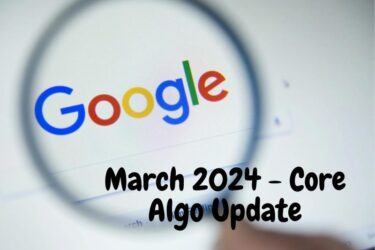Every business or professional website strives to upload unique content to increase engagement. The increased traffic from worldwide terminals results in sales and brand awareness. In short, it converts visitors into clients, so the business is more talked about. A website will have many interactive components, such as polls, videos, and images. However, today’s discussion focuses on the primary feature—pictures.
Did you know images improve website ranking?
The pictures available on the website add to the text’s value. Moreover, it enhances user experience so the client repeatedly visits the website. In addition, uploading images to the website also adds backlinking authority. The website is promoted heavily when the backlinks belong to credible sources. Thus, further increasing visitors and engagement with the brand.
Images breathe life into a website. Unfortunately, they can slow the online platform and adversely affect the page’s loading speed. Pictures are preferred to videos and GIFs, which are data-heavy and slow down engagement.
Fortunately, image optimisation techniques exist, so the pictures complement the website perfectly. But let us first focus on why is image optimisation important.
Why is image optimisation important for SEO?
- One reason why image optimisation is important is that it saves disk space. As a result, WordPress allows better use of resources. When images consume less space, you can focus on other elements to improve the website.
- Secondly, image optimisation SEO also improves website user experience. The visitors will leave the website if it takes more than three seconds to load. Image optimisation techniques reduce the bounce rate significantly.
- Learning the image optimisation algorithm is essential for better SEO. Search engines prefer fast websites while penalising slow platforms. In other words, websites with optimised images will rank better on the SERPS.
- Lastly, image optimisation will also increase website speed. When the image is not optimised, the website loads much longer. As a result, the business may lose clients and suffer from plummeting engagement.
5 Tips for image optimisation for WordPress SEO
Here are some of the successful image optimisation techniques for WordPress SEO
1. Choosing the right format
Image optimisation SEO begins with picking the correct picture format. The prevailing image formats for the website are GIF, SVG, PNG, JPEG, and WebP. Now you must be wondering which is the right one. Each format follows different compression techniques. As a result, the image’s size may expand to double the original size.
If you choose a PNG format, it will preserve the image’s quality. However, the file size is also large, which may impact the loading speed adversely. Therefore, substituting pictures for other formats will keep the website’s quality. Moreover, the image compression will reduce the size too. Consider the following options.
- JPEG is recommended for realistic-looking photos to engage with the visitor. It is ideal for drawings, sketches, graphics, and text. JPEG focuses on the boundary and educates the reader without distracting focus.
- Secondly, PNG is also excellent for representing excellent image quality. However, the format expands the picture size. Therefore, experts recommend a transparent background so the website does not take too long to load.
- Thirdly, SVG promotes pictures with transparent backgrounds. The format complements pictures with text and promotes lossless compression. The quality is similar to the PNG.
- In addition, GIF is primarily used for animation. Therefore, you will notice the image format on schools or children’s websites to build interest.
- Lastly, WebP offers a smaller picture size than PNG. It maintains high quality and does not ruin transparency.
JPEG wins the argument after studying the format’s attributes. The format supports smaller picture sizes and maintains good quality than WebP or PNG. Therefore, it is ideal for professionally constructed portfolios.
However, if you wish for excellent picture quality, choose WebP. The format will reduce the page size.
2. Compressing and Resize
When you hire an image optimisation expert, they will compress the images to reduce size. Image optimisation SEO will compress the picture so the website loads faster on WordPress. As a result, its speed will improve too.
The quickest way to compress an image is by using a WordPress plugin. The additional feature offers more service than image optimisation. We recommend contacting Algo Digital for plugin recommendation that improves the image quality.
Furthermore, the user can also process large image files before uploading them to WordPress. Numerous editing software provides the services and works with different image formats mentioned above. Their image optimisation techniques will compress the image to the right size.
Image optimisation SEO for WordPress also includes resizing images. Thankfully, resizing pixelation is part of the WordPress core features. When you launch WordPress, the user is greeted with four image sizes. These are:
- Thumbnail (150 x 150 pixels)
- Medium (Maximum ceiling of 300 x 300 pixels)
- Large (Maximum ceiling of 1024 x 1024 pixels)
- Full Size (Original picture size)
However, you can also edit the image size to accommodate your preferences. Follow the below-mentioned steps to alternate sizes using the media library.
- Launch the WordPress dashboard. Click Settings, then Media
- The user inputs the maximum height and width value into the interface
- Select Save Changes.
3. Declutter the WordPress Media Library
The WordPress site grows alongside the media library. However, it will result in gathering unused images that did not make it to the website. Image optimisation techniques warn that unused media will slow down the website. Unfortunately, these pictures did not make it to the blog posts or web pages.
Besides slowing down the website, the images will consume unnecessary space on the hosting server. As a result, it makes managing the media difficult. Furthermore, performing and creating backups will take longer because of the increasing number of files.
Before the user declutters the WordPress Media Library, they must have a website backup on WordPress. Consequently, the user can restore the website to its previous form if the backup goes awry.
Follow the steps below to sort the media library for image optimisation SEO. Get rid of unwanted images by:
- Launching WordPress and making way to the admin panel
- Find Media. Select Library.
- WordPress allows users to delete pictures one by one or in bulk.
- If you delete pictures individually, select the picture and click Delete Permanently.
- Click on Bulk Select to delete the images together. Select the unused pictures. Choose Delete Permanently.
The media library now has fewer images and will complement the website speed.
4. Employ a Content Delivery Network
A Content Delivery Network or CDN is accepted worldwide for image optimisation SEO. When you hire an image optimisation expert, they recommend using CDN for expert results. The network consists of edge servers that enable quick delivery of website elements such as videos and pictures.
The website will distribute the image to the global edge servers that originated from the origin server. Subsequently, the edge server near the website visitor is accountable for the images.
For example, if someone from India is visiting the website, the CDN server will forward images from its Tokyo point of presence. When the website attracts high traffic levels, using CDN in WordPress will distribute the burden. As a result, the load time lessens significantly while improving performance.
Common examples of CDNs are Sucuri, KeyCDN, and Cloudflare. Unfortunately, setting up a CDN is complicated work. Therefore, hire Algo Digital to install Content Delivery Network and speed up the website.
5. Using captions
Let’s conclude the list of image optimisation techniques with the last suggestion. Alt tags explain images in HTML code. The few words that describe the image content are called alt text. The text appears in the following scenarios if the images are unable to load:
- The user has a laggy or unstable internet connection.
- The user has turned off image loading in their browser settings
- Server health issues.
Some countries legally require website owners to post images alongside alt tags. For example, the American Disabilities Act emphasises using alt tags in WordPress so the visually impaired can better understand the website content. It improves accessibility and user experience.
Usually, the alt text appears in the upper left corner. It plays a vital role in image optimisation SEO as search engines understand the image better. Moreover, its indexation is seamless too. A successful strategy for alt tags mentions
- Keywords for enhancing SEO. However, it must not lead to keyword stuffing.
- Mentioning full image details. If you can visualise the image after reading the image, the alt tag is correct.
Alt tags or image captions aren’t always necessary. However, they are mandatory if the laws require them. Alt tags help visitors to understand the content better while improving SEO ranking.
Hire an SEO image optimisation expert today!
Image optimisation techniques will boost the average page depths, on-page time, and other metrics. Moreover, the pictures also engage the reader successfully. Implementing an image optimisation algorithm is essential if the website offers product reviews and how-to guides.
Algo Digital puts image optimisation on the client’s agenda and analyses its performance using different metrics. We will also prepare the images and add them to the website for successful website indexation via crawlers. Algo Digital promises improved ranking, better traffic, and a conversion boost. Email us today at [email protected] for queries.




